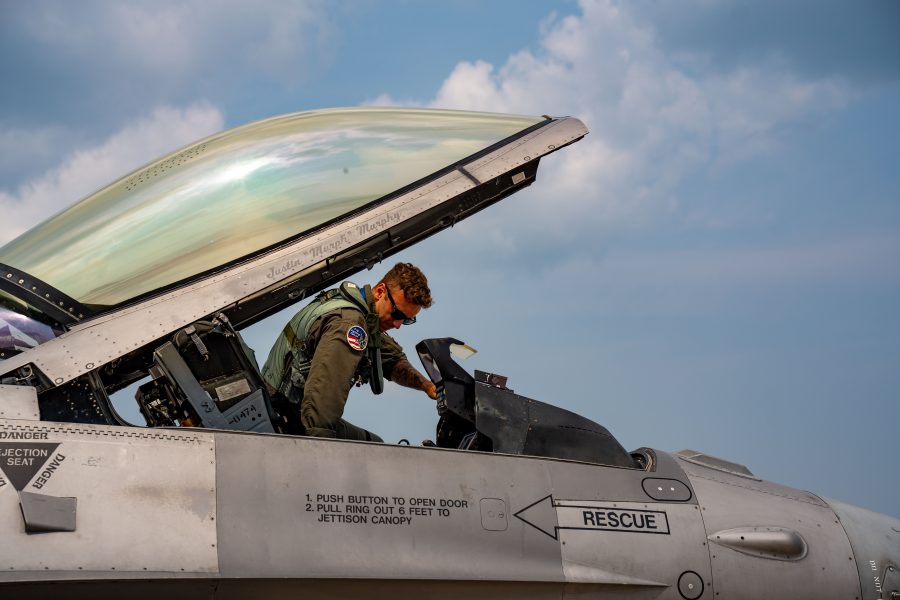America’s Air Force today is smaller and older than it was in my day, but what worries me more than size or age is just how ready we are to fly, fight, and win in a future war.
I graduated from flying school and got my wings in January 1959. From then until I left Vietnam in November 1969, I logged 3,138.4 flying hours in the two principal types of aircraft I flew, the F-100 and F-104—an average of 23.9 hours per month.
It is true that this 131-month period included a two-year tour with the Thunderbirds and 11 months in combat, both high-intensity flying jobs. But it also included 16 months on the staff of the Third Air Force, the momentum lost in transitioning back-and-forth between the two aircraft types four times, downtime associated with six PCS moves, and time spent in various schools—jump school, half a dozen survival schools, forward air controller school—as well as leave and so forth.
In those days, we aimed to get 20 hours a month, and I was able to beat that average. For me, the end result was remarkable. For one thing, I loved the life; I decided to make the Air Force a career. More importantly, you could say I felt quite at home in the air.
There is a certain attitude that goes with being a combat pilot. The fight starts at the bottom of the ladder. From then until the forms are filled out, nobody is better than you—no team is better than you and your wingman. It’s the other guy—the whole other side—that’s in trouble. In my opinion, this is a winning attitude. The seed for it is planted during checkout, in academics, and daily briefings. It can be cultivated in the simulator, watered at beer call, and nourished during time spent hanging around the ops desk hoping someone else will cancel. But the combat pilot attitude matures into a way of life in the cockpit—flying real hours in a real airplane, face-to-face with real things that happen in real air.
I am worried about today’s force. We’re not flying enough. Maybe today’s fighter jock is better than my generation and no longer needs 20 hours in the cockpit every month. Maybe. But I don’t think single-digit flying hours per month is the right answer for anybody. We used to ridicule our Soviet-era opposition when they were flying at about our present rate. Grapes, waiting to be plucked.
In my view, increasing flying hours for combat pilots should be a top priority. I can’t say it’s number one, or number two, or number six, or whatever, because we need to fix some other very urgent problems, particularly air base hardening and defense. But the flying hour program must surely be among the handful of highest priority matters our Air Force should fix quickly.
If all else fails, we can use our imaginations to help solve the problem. If the F-22 or the F-35 simply cannot produce enough hours, buy and assign gliders or trainers like the T-6 to each fighter squadron. Do aerobatics, do spin training, hooded takeoffs, and landings. Time spent in the air flying anything builds airmanship and confidence. Better still, it’s fun. It glues people to the organization, as it did me.
I’m all for increasing the number of pilots coming out of flying school. But this is an example of how competing priorities should be ranked: First, produce a flying hour program that ensures the excellence of the existing force. Then let’s talk about increasing pilot production. Better a small Air Force that can be relied on than a big one that cannot.
Gen. Merrill A. “Tony” McPeak was the 14th Chief of Staff of the U.S. Air Force. Over the course of a 37-year career, he completed more than 6,000 flying hours in the F-4, F-15, F-16, F-100, F-104, and F- 111.


